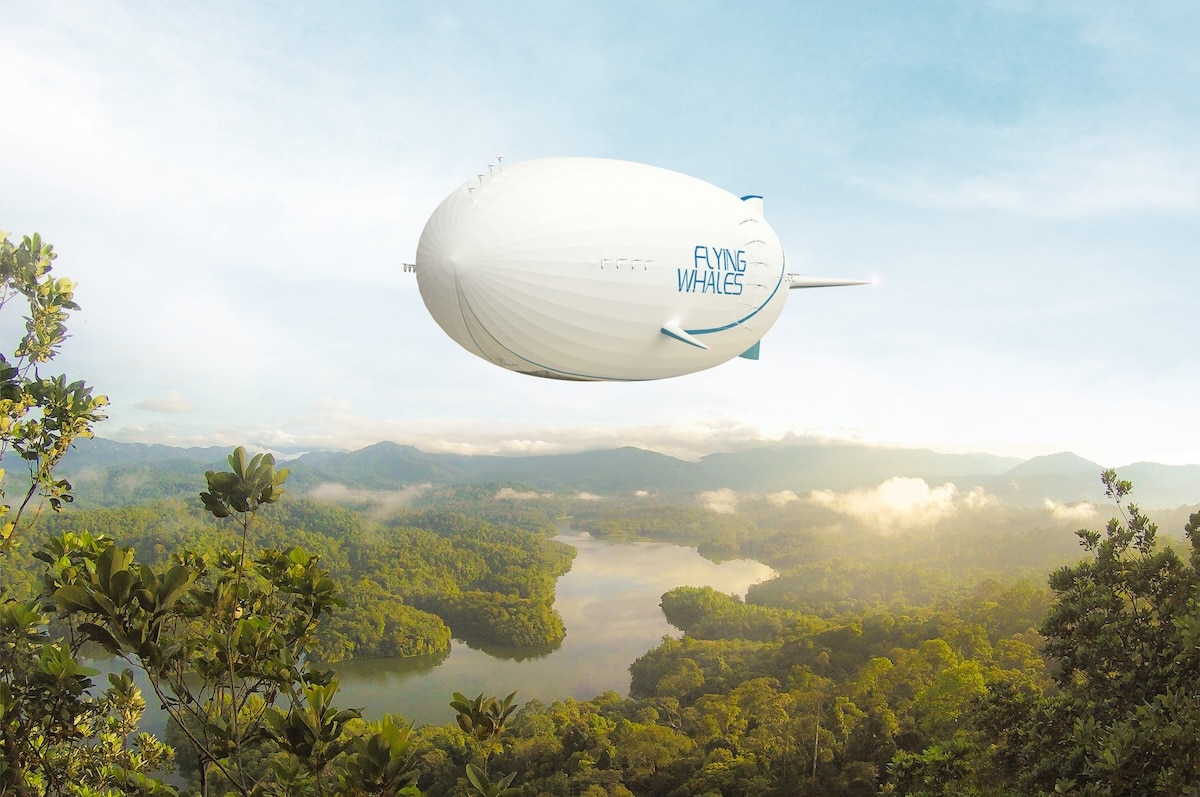The Flying Whales airship ready to take off despite controversies

The LCA60T airship project, developed by the Franco-Canadian company Flying Whales, could revolutionize freight transportation.
Flying Whales positions itself as a more environmentally friendly alternative to traditional air freight. Scheduled for 2027, this giant airship can carry up to 60 tons. It measures 200 meters in length and 50 meters in diameter and will float in the air thanks to helium. The Flying Whales thus sparks fascination and hope for greener mobility. However, it is also at the heart of significant environmental concerns.
The goal is to reduce the carbon footprint of heavy cargo transport, particularly for products such as wind turbine blades, compared to road transport. Estimates suggest that the airship could cut CO2 emissions by 70%. However, the project is far from controversy-free.
One of the main sources of tension lies in the construction of the assembly plant in Gironde. To set up the facility, the company will need to clear 58 hectares of natural habitats and destroy 32.5 hectares of wetlands. This project faces strong opposition from environmentalists, who denounce the destruction of these vital ecosystems, especially in the fight against climate change. The Environmental Authority has also issued unfavorable opinions multiple times, highlighting the severe impact on the regional natural heritage.
Technical and industrial challenges
The development of the LCA60T is not only hindered by ecological concerns. Technically, the project must overcome several major challenges. The airship, designed to fly at 100 km/h over 1,000 kilometers, will need to demonstrate resistance to bad weather and strong winds. Additionally, the helium technology, chosen for safety reasons over hydrogen, makes the manufacturing of each device costly, with an estimated price of six million euros per airship.
The industrial challenge is also significant. Producing modern airships requires recreating an industrial sector that nearly vanished after the Hindenburg disaster in 1937. Aviation authorities, cautious about technological breakthroughs, will also need to approve this new technology before certification can be granted.
A long road ahead before commercialization
Despite these obstacles, Flying Whales continues to advance with support from public and private investments totaling 230 million euros. Commercial launch is scheduled between 2028 and 2029, but delays could still impact the timeline. The high cost of these airships, estimated at several tens of millions of euros, limits their accessibility to a niche market.
For project supporters, especially local authorities, the development of Flying Whales represents a significant advance for the regional economy and the aeronautics industry. However, the time and compromises necessary to succeed in this technological revolution show how challenging the path remains.
Read also: Imminent takeoff for the flying car Samson Switchblade?
This page is translated from the original post "Le dirigeable Flying Whales prêt à décoller malgré les controverses" in French.
We also suggestthese articles:
Also read






